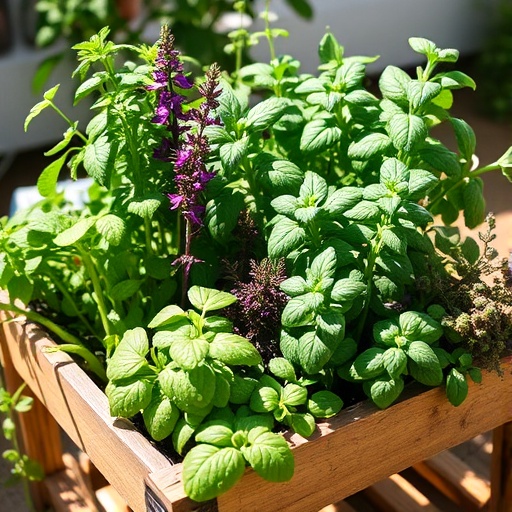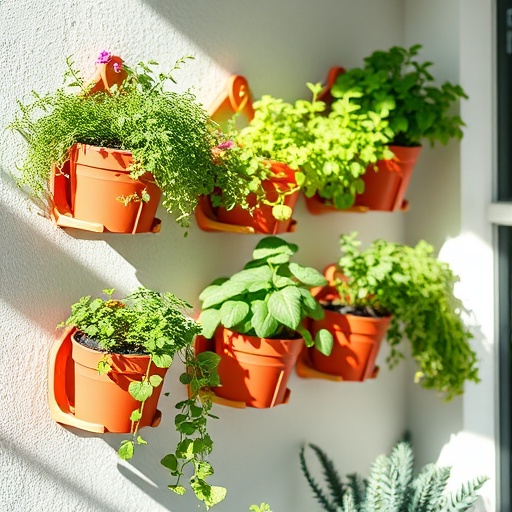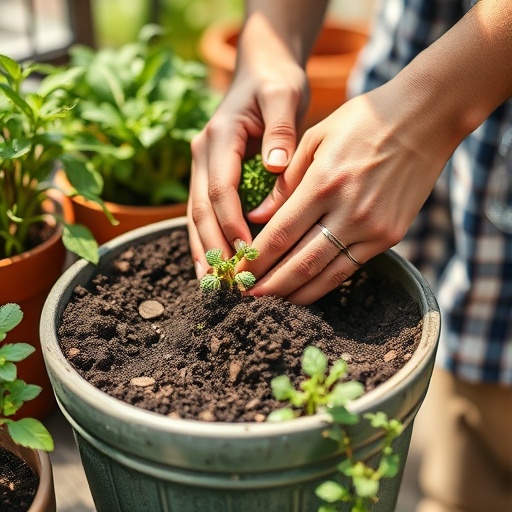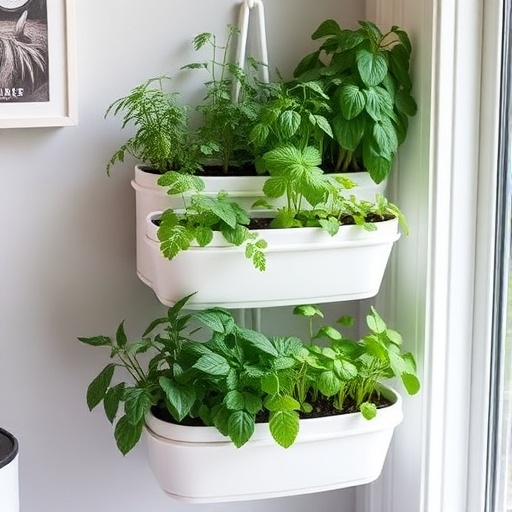Introduction
Ever wondered if your green thumb is gathering dust simply because you live in a small apartment? Do you eye those sprawling backyard gardens with a sigh, convinced that lush greenery and fresh herbs are only for those with acres of land? Think again! Cultivating a thriving indoor paradise, even in the smallest of spaces, is not just a dream but an achievable reality for everyone. With a few clever apartment gardening hacks, a sprinkle of creativity, and the right approach, you can transform your urban dwelling into a vibrant, living sanctuary. This isn't just about growing plants; it's about bringing life, freshness, and a touch of nature's tranquility into your everyday environment.
Tools & Materials Needed
Embarking on your indoor gardening journey doesn't require a massive investment. In fact, many of the essential items can be repurposed or found affordably. Here’s a detailed list to get you started:
- Pots and Containers: Size matters, and drainage is crucial! Opt for pots with drainage holes at the bottom to prevent root rot. Eco-friendly alternatives include recycled plastic containers, old tin cans (make sure to punch holes!), or even terracotta pots, which offer excellent breathability. Self-watering planters are also fantastic for busy individuals.
- Quality Potting Mix: Don't skimp here! A good general-purpose potting mix provides essential nutrients and proper drainage. Look for mixes that are peat-free or coconut coir-based for sustainability. For herbs and vegetables, consider organic potting soils.
- Seeds or Starter Plants: For beginners, starting with established seedlings can be less daunting. However, growing from seed is more economical and offers a wider variety. Consider easy-to-grow herbs like basil, mint, or thyme, or compact vegetables like cherry tomatoes or radishes.
- Small Trowel/Shovel: Essential for scooping soil and transplanting. A repurposed old spoon can work in a pinch for very small pots!
- Watering Can: A small watering can with a narrow spout allows for precise watering, preventing overwatering and soil displacement.
- Pruning Shears/Scissors: For trimming, harvesting, and shaping your plants. Any sharp pair of household scissors will do for smaller plants.
- Grow Lights (Optional but Recommended): If your apartment lacks ample natural light, a small LED grow light can make a world of difference, especially during winter months. Full-spectrum lights mimic natural sunlight effectively.
- Spray Bottle: Handy for misting plants that love humidity, like ferns, or for applying organic pest deterrents.
- Labels/Markers: To keep track of what you’ve planted and when, especially useful when growing from seed.
Time & Effort Overview
One of the most appealing aspects of apartment gardening hacks is their flexibility and often minimal time commitment. Growing small herbs and compact vegetables is generally a beginner-friendly endeavor, perfect for those new to planting.
- Planting: Initial setup, including planting seeds or repotting seedlings, usually takes about 15-30 minutes per plant.
- Daily Maintenance: Depending on the plant, this could range from 2-5 minutes of checking soil moisture and light conditions.
- Weekly Maintenance: Watering (if not daily), rotating plants, and checking for pests might take 10-20 minutes total.
- Harvesting: Small herbs can be harvested frequently, often growing back within days. For comparison, typical herbs like basil can be ready for their first harvest in about 3-4 weeks from seed, whereas some leafy greens might be ready in just 2-3 weeks, approximately 25% faster than their outdoor counterparts due to controlled indoor conditions.
- Difficulty Level: Generally beginner to intermediate. Most indoor plants, especially herbs and leafy greens, are forgiving. Some fruiting plants like strawberries or dwarf tomatoes may require a bit more attention, nudging them into the intermediate category.
Step-by-Step Gardening Process
Step 1: Choosing Your Plants & Containers
Start by selecting plants that thrive indoors and suit your apartment's light conditions. Consider herbs (basil, mint, cilantro), leafy greens (lettuce, spinach), or even small fruit-bearing plants (strawberries, dwarf peppers). Match your chosen plants to appropriately sized pots with good drainage.
Step 2: Preparing Your Potting Mix
Fill your chosen containers with a high-quality potting mix. Avoid garden soil, as it can be too dense for pots and may harbor pests. Leave about an inch of space from the rim of the pot to prevent spillage when watering.
Step 3: Planting Seeds or Seedlings
If planting seeds, create small indentations (read the seed packet for depth guidelines) and place a few seeds in each. Cover lightly with soil. For seedlings, gently remove them from their nursery pots, being careful not to damage the roots, and place them in the prepared hole. Backfill with soil and lightly press around the base.
Step 4: Initial Watering
After planting, water thoroughly until you see water draining from the bottom of the pot. This settles the soil around the seeds or roots. Empty any excess water from the saucer to prevent waterlogging.
Step 5: Finding the Perfect Spot
Place your newly planted containers in a location that meets their light requirements. Most edible plants need at least 4-6 hours of direct sunlight. A south-facing window is often ideal. If natural light is insufficient, position them under your grow light.
Step 6: Ongoing Care & Observation
This is where the magic happens! Regularly check your plants. Don't worry if a few early leaves yellow; it's often a natural part of adjustment. Here’s how to fix common issues: if the soil is consistently dry, increase watering; if leaves look droopy but the soil is wet, you might be overwatering or have poor drainage. Consistent observation is your best tool.
Growth & Care Tips
Mastering apartment gardening hacks means understanding the specific needs of your indoor plants.
- Watering Frequency: The single most common mistake for indoor gardeners is overwatering. Check the soil moisture by sticking your finger an inch or two into the soil. Water only when the soil feels dry. Different plants have different needs; for instance, succulents thrive on less frequent watering, while herbs like basil prefer consistently moist (but not soggy) soil. Data suggests that overwatering causes root rot in 60% of houseplants, leading to plant death.
- Sunlight Exposure: Most edible plants require at least 6 hours of bright, direct sunlight daily. Rotate your plants every few days to ensure even growth and prevent them from leaning towards the light source. If direct sunlight isn't possible, supplement with a full-spectrum LED grow light for 12-14 hours a day.
- Pruning: Regular pruning encourages bushier growth and higher yields. For herbs, simply pinch off the top sets of leaves. For flowering plants, deadhead spent blooms to encourage new flowers. Pruning also helps manage plant size in small spaces.
- Fertilization: Indoor plants deplete soil nutrients faster than outdoor plants. Begin fertilizing about a month after planting, using a balanced liquid fertilizer diluted to half strength, typically every 2-4 weeks during the growing season. Consult product instructions for specific ratios.
- Pest Prevention: Inspect your plants regularly for signs of pests like aphids or spider mites. A simple solution of neem oil and water can be an effective organic pesticide. Good air circulation also helps deter pests.
Eco-Friendly & Sustainable Alternatives
Sustainability is a key component of modern apartment gardening hacks.
- Composting: Start a small indoor worm composter or a Bokashi compost bin to turn kitchen scraps into nutrient-rich "black gold" for your plants. This significantly reduces waste and provides free, organic fertilizer.
- Natural Fertilizers: Beyond composting, consider liquid seaweed extracts, coffee grounds (for acid-loving plants like blueberries or some herbs), or even diluted aquarium water as natural nutrient boosters.
- Water Conservation: Collect rainwater if possible, or repurpose leftover drinking water for your plants. Self-watering planters and drip irrigation systems (even small DIY versions) can also reduce water waste.
- Vertical Gardens & Shelving: Maximize space with vertical planting solutions like tiered shelving units, wall-mounted planters, or even upcycled pallet gardens. These transform unused vertical space into lush green walls. Balconies can also be utilized for container gardens, using railing planters or hanging baskets.
Creative Ideas & Uses
Beyond nurturing plants, these apartment gardening hacks offer opportunities for creative expression and functional beauty.
- Edible Decor: Arrange a collection of vibrant herbs, colorful cherry tomatoes, or cascading strawberry plants in attractive pots on your kitchen windowsill or tabletop. They serve dual purposes as fresh ingredients and living decor.
- Repurposing Materials: Old wine crates can become stylish planter boxes. Mason jars are perfect for propagating cuttings or growing herbs hydroponically. Even tin cans, painted and drilled, make charming, inexpensive pots.
- Plant-Themed Zones: Create dedicated "green zones" in your apartment. A cozy reading nook with trailing plants, a kitchen corner boasting essential cooking herbs, or a bathroom with humidity-loving ferns can transform the feel of your dwelling. Consider combining plants with varying heights and textures for visual interest – a tall rosemary plant next to a sprawling thyme, for instance. For more inspiration on merging plants with design, check out https://www.pinterest.com/janatjanay47/.
- Aesthetic Combinations: Group plants not just by their needs but also by their visual appeal. Contrast dark green foliage with lighter variegated leaves, or combine plants with different growth habits (upright, trailing, bushy) to create a dynamic display.
Common Mistakes to Avoid
Even experienced gardeners make mistakes, and recognizing them is the first step in successful apartment gardening hacks.
- Overwatering: As mentioned, this is the number one killer of indoor plants. Instead of watering on a strict schedule, check the soil moisture. Err on the side of underwatering rather than overwatering, as it's easier to revive an underwatered plant.
- Insufficient Light: Many indoor spaces simply don't get enough natural light for plants that thrive outdoors. Symptoms include leggy growth, pale leaves, and lack of flowering or fruiting. Invest in a grow light if necessary.
- Ignoring Drainage: Pots without drainage holes turn into death traps. If using decorative pots without holes, place your plant in a slightly smaller pot with drainage inside, and remove it for watering, allowing it to drain fully before returning it.
- Forgetting to Fertilize: While initial potting mix provides some nutrients, indoor plants need regular feeding, especially if they are actively growing or producing. Nutrient-deficient plants will show stunted growth and discolored leaves.
- Using Garden Soil: Garden soil is too heavy and compact for containers. It doesn't drain well indoors and can become waterlogged, leading to root rot. It can also introduce pests and diseases into your home.
Maintenance & Storage Tips
Ensuring the long-term health of your plants and optimizing your apartment gardening hacks requires ongoing attention and smart planning.
- Seasonal Care: Adjust watering and fertilization based on the season. Plants typically grow less in winter, requiring less water and no fertilizer. Increase care in spring and summer when growth is active.
- Addressing Yellow Leaves: Often a sign of overwatering, underwatering, or nutrient deficiency. Inspect the entire plant and soil to diagnose the issue. Prune off yellow leaves to redirect the plant's energy.
- Poor Soil Drainage Solutions: If water sits on top of the soil or drains very slowly, the soil might be too compacted or the pot's drainage holes are blocked. Gently aerate the soil with a chopstick or pencil, and ensure drainage holes are clear. Repotting with fresh, well-draining soil may be necessary.
- Pest Management: Early detection is key. If you spot pests, isolate the affected plant immediately. Organic solutions like insecticidal soap or neem oil are effective and safe for indoor use.
- Seed Storage: If you're saving seeds, store them in a cool, dark, and dry place in airtight containers to maintain viability for future planting. Refrigeration can extend their shelf life.
Conclusion
Embarking on your indoor gardening journey, armed with these proven apartment gardening hacks, is a remarkably rewarding experience. You'll not only enjoy fresh, homegrown produce and vibrant foliage but also cultivate a deeper connection with nature, right within your urban abode. The benefits extend far beyond aesthetics—from improved air quality and reduced stress to the sheer joy of watching something you planted flourish. So, what are you waiting for? Grab a pot, a bag of soil, and your chosen seeds, and start planting today! Share your triumphs (and even your learning curves!) with us in the comments below, or better yet, tag us in your Instagram posts. We can't wait to see your miniature urban jungles!
FAQ
Q1: How much sunlight do indoor edible plants really need?
A: Most edible plants suited for apartment gardening hacks, such as herbs and leafy greens, require at least 4-6 hours of direct sunlight daily to thrive. A south-facing window is usually best, but a full-spectrum grow light can effectively supplement or replace direct sun.
Q2: What are the easiest plants for beginners to grow indoors?
A: For those just starting their apartment gardening adventure, basil, mint, chives, lettuce, spinach, and radishes are excellent choices. They are relatively low-maintenance, grow quickly, and offer a satisfying harvest.
Q3: How often should I water my indoor plants?
A: The best approach is to check the soil moisture. Stick your finger about an inch or two into the soil; if it feels dry, it's time to water. This avoids overwatering, a common pitfall in indoor gardening.
Q4: Do I need special soil for indoor container gardening?
A: Yes, using a high-quality potting mix specifically formulated for containers is crucial for successful apartment gardening hacks. Garden soil is too dense and doesn't provide adequate drainage or aeration for potted plants.
Q5: How can I prevent common indoor plant pests?
A: Regular inspection is your best defense. Good air circulation can deter pests. If you spot them, isolate the plant and tackle them with organic solutions like neem oil spray or insecticidal soap.
Q6: Can I use regular tap water for my indoor plants?
A: Generally, yes, tap water is fine for most plants. However, if your tap water is heavily chlorinated, letting it sit out for 24 hours can help dissipate the chlorine. Some plants are sensitive to hard water, in which case filtered water might be beneficial.
Q7: How do I know when my plants need fertilizer?
A: Look for signs such as stunted growth, yellowing leaves despite adequate watering, or a general lack of vigor. Most high-quality potting mixes come with nutrients that last about a month, after which you can begin a regular feeding schedule with a diluted liquid fertilizer during the growing season.
You may also enjoy reading about how to get the most out of your container setup in "How to Grow Tomatoes in Pots" or exploring more ways to integrate greenery into your living space. Consider delving into various indoor gardening categories for more tips and inspiration!






